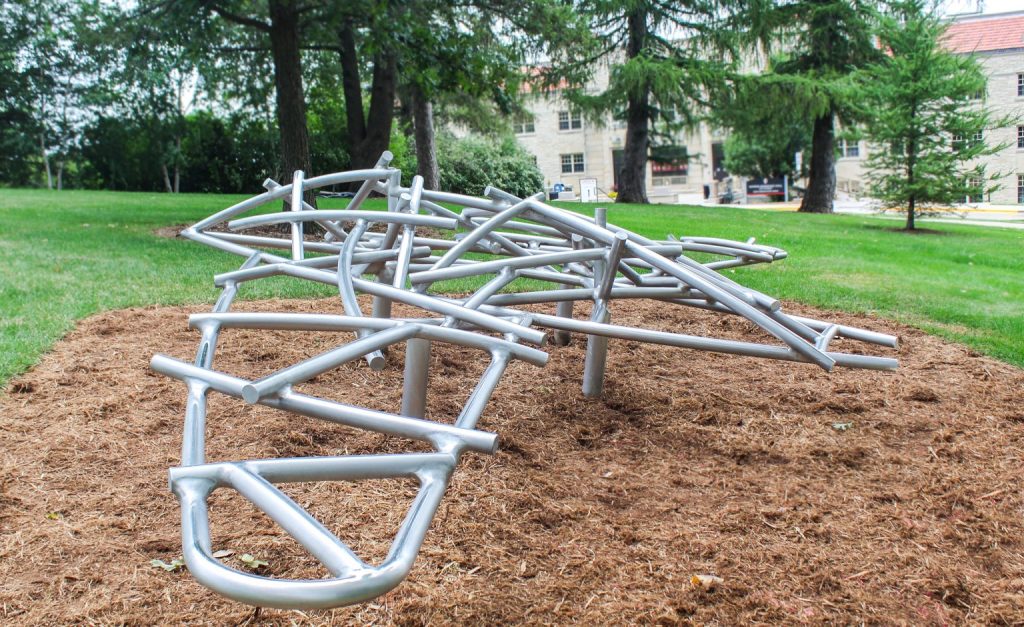Nearly three decades ago, Truman Lowe’s sculpture “Effigy: Bird Form” made its debut for a yearlong exhibition at the White House.
The artwork created by Lowe, a University of Wisconsin-Madison alum and former art professor, has now found its permanent home on campus. Located just north of Van Hise Hall and atop Observatory Hill — once home to Native American effigy mounds — the aluminum sculpture reflects Lowe’s Ho-Chunk roots and the loss of Indigenous burial mounds throughout the Midwest.
UW-Madison will hold a dedication ceremony outside of Van Hise on Friday at 10 a.m. to honor the piece and the renowned artist, who died in March 2019.
“Truman loved the mounds on campus. He spent a lot of time there,” said Jo Ortel, a former Beloit College art history professor who wrote a book about Lowe’s work. “He would be so happy to see the sculpture there.”
“Effigy: Bird Form” is 20 feet wide and 12 feet long, and weighs over 900 pounds. Lowe created the artwork with the help of Hooper Custom Metals, a DeForest company, which welded together solid aluminum rods to form the sculpture’s woven lattice design. It resembles a bird about to take flight, hovering just above the ground.
“He wanted to convey the number of mounds that have been destroyed over time and create a memorial for those that were lost,” Ortel said. “At the same time, the sculpture is an indication that Indigenous people who lived here were really in touch with the land and environment, creating shapes out of the earth.”

